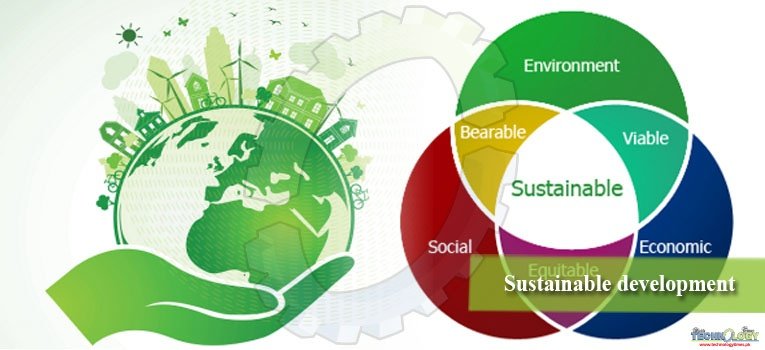The Brundtland Commission’s brief definition of sustainable development as the “ability to make development sustainable—to ensure that it meets the needs of the present without compromising the ability of future generations to meet their own needs”12 is surely the standard definition when judged by its widespread use and frequency of citation.

The use of this definition has led many to see sustainable development as having a major focus on intergenerational equity. Although the brief definition does not explicitly mention the environment or development, the subsequent paragraphs, while rarely quoted, are clear.
On development, the report states that human needs are basic and essential; that economic growth— but also equity to share resources with the poor—is required to sustain them; and that equity is encouraged by effective citizen participation.
Indicators of sustainable development:
Still another way to define sustainable development is in how it is measured. Indeed, despite sustainable development’s creative ambiguity, the most serious efforts to define it, albeit implicit in many cases, come in the form of indicators.
Combining global, national, and local initiatives, there are literally hundreds of efforts to define appropriate indicators and to measure them.
Recently, a dozen such efforts were reviewed. Half were global in coverage, using country or regional data (the UN Commission on Sustainable Development, Consultative Group on Sustainable Development Indicators, Well being Index, Environmental Sustainability Index, Global Scenario Group, and the Ecological Footprint).
Of the remaining efforts, three were country studies (in the United States, the Genuine Progress Indicator and the Interagency Working Group on Sustainable Development Indicators, and in Costa Rica, the System of Indicators for Sustainable Development); one was a city study (the Boston Indicators Project); one was global in scope but focused on indicators of unsustainable (State Failure Task Force); and one focused on corporate and nongovernmental entities (Global Reporting Initiative).
Values:
Still another mode of defining sustainable development is through the values that represent or support sustainable development. But values, like sustainable development, have many meanings. In general, values are expressions of, or beliefs in, the worth of objects, qualities, or behaviors.
They are typically expressed in terms of goodness or desirability or, conversely, in terms of badness or avoidance. They often invoke feelings, define or direct us to goals, frame our attitudes, and provide standards against which the behaviors of individuals and societies can be judged.
As such, they often overlap with sustainability goals and indicators. Indeed, the three pillars of sustainable development; the benchmark goals of the Millennium Declaration, the Sustainability Transition, and the Great Transition; and the many indicator initiatives are all expressions of values.
Practice:
Finally—and in many ways, most importantly—sustainable development is defined in practice. The practice includes the many efforts at defining the concept, establishing goals, creating indicators, and asserting values. But additionally, it includes developing social movements, organizing institutions, crafting sustainability science and technology, and negotiating the grand compromise among those who are principally concerned with nature and environment, those who value economic development, and those who are dedicated to improving the human condition.